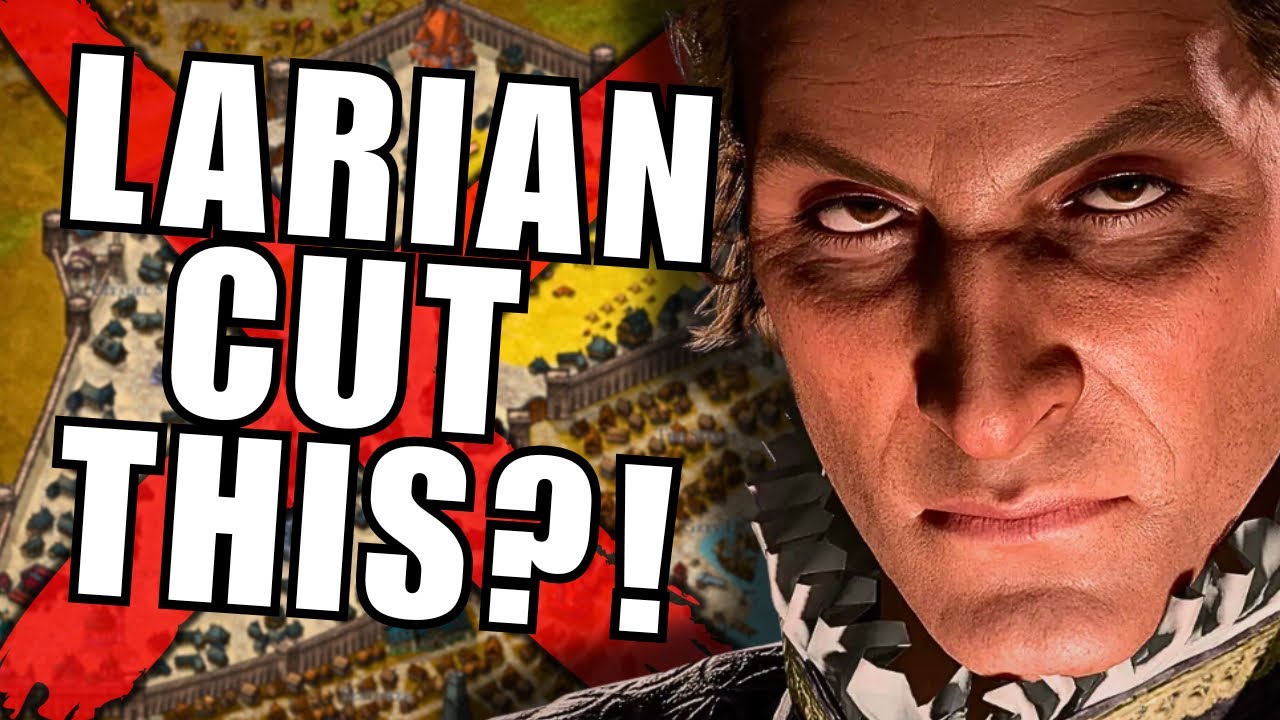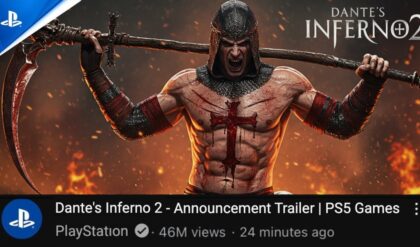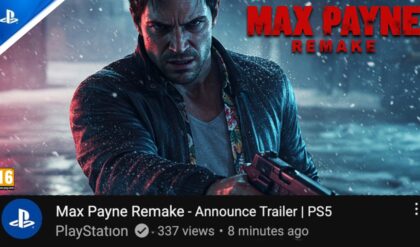Baldur’s Gate 3’s Massive Cut Content Revealed
Baldur’s Gate 3, Larian Studios’ 2023 Dungeons & Dragons CRPG, is a monumental achievement, selling 15 million copies, earning a 96/100 OpenCritic score, and sweeping Game of the Year awards. Its sprawling world, branching narrative, and tactical combat redefined the genre, offering hundreds of hours of content across three acts. Yet, beneath this polished surface lies a staggering secret: an insane amount of cut content, including entire zones, alternate endings, scrapped bosses, and a fully voiced second dream-world storyline. Larian didn’t just trim a few quests—they excised massive, production-ready portions of the game before its August 2023 launch. This article dives into the scope of these cuts, explores why they were made, and reflects on what might have been, drawing on community discoveries and developer insights to uncover a lost masterpiece within Baldur’s Gate 3.

The Scale of the Cuts: A Game Within a Game
Game development often involves cutting content to meet deadlines, budgets, or quality standards, but Baldur’s Gate 3’s excised material is extraordinary in scope. Datamined files, developer interviews, and Early Access comparisons reveal that Larian removed enough content to fill a standalone expansion. These cuts weren’t mere concepts—many were fully voiced, textured, and partially implemented, suggesting they were axed late in development. The decision, driven by Larian’s perfectionism and resource constraints, ensured the final game’s polish but left fans speculating about a “what-if” version that could have been even grander.
The cut content spans all three acts, affecting environments, storylines, characters, and gameplay mechanics. Entire zones were scrapped, alternate narrative paths were abandoned, and significant boss encounters were shelved. Most intriguingly, a second dream-world storyline, fully voiced and deeply integrated, was removed, hinting at a parallel narrative that could have doubled the game’s thematic depth. These revelations, uncovered through mods, datamining, and developer comments, have sparked heated discussions on Reddit and X, with players marveling at the ambition—and mourning the loss—of Larian’s original vision.
Entire Zones: Lost Landscapes of Faerûn
Baldur’s Gate 3’s world, from the Emerald Grove to the Lower City, is dense with detail, but several planned zones never made it to release. Datamined files and Early Access builds reveal at least three major areas cut from the game:
Candlekeep: This iconic Baldur’s Gate location, a fully developed Act 1 area, was intended as a scholarly retreat tied to the main quest. It featured unique NPCs, quests, and a library filled with lore, with environmental assets like bookshelves and arcane wards partially coded. Voiced dialogue for characters like Imoen, a Baldur’s Gate 2 fan-favorite, suggests she had a larger role here. Candlekeep was cut due to pacing issues, as it risked bloating Act 1’s already complex narrative.
Moonrise Towers Expanded: The Moonrise Towers in Act 2 were meant to include an underground dungeon and additional floors, with combat encounters and lore about the Dark Urge’s origins. These areas, partially textured, were streamlined to focus on the tower’s main events, reducing scope creep.
Avernus Outskirts: A planned Act 3 zone in the Nine Hells, Avernus, would have expanded Karlach’s storyline with demonic battles and a fiery landscape. Datamined assets show lava rivers and infernal architecture, but the zone was cut to tighten Act 3’s focus on Baldur’s Gate itself.
These zones, totaling hours of potential gameplay, were removed to maintain narrative cohesion and meet Larian’s three-year Early Access timeline. Modders have restored fragments, like Candlekeep’s layout, but without full scripting, they remain incomplete. The loss of these areas highlights Larian’s ruthless prioritization of quality over quantity, though fans lament the missed exploration opportunities.
Alternate Endings: A Multitude of Paths
Baldur’s Gate 3’s endings are already diverse, shaped by player choices and companion arcs, but datamined files reveal even more were planned. Early Access builds included alternate endings for key characters and factions, offering greater narrative flexibility:
Dark Urge Redemption Arc: The Dark Urge, a customizable origin character, had a fully voiced redemption path with unique dialogue and cutscenes, allowing players to resist their murderous urges more explicitly. This was scaled back to focus on the binary “embrace or reject” endings, simplifying the arc.
Gale’s Godhood Path: Gale’s ambition to ascend to godhood had additional endings, including a tragic variant where he sacrifices himself to save Mystra. Voiced lines for Mystra and alternate Gale epilogues were cut to streamline his story.
Minthara’s Expanded Role: Minthara, a drow companion, had alternate endings tied to her loyalty to Lolth or defection to the party. These included unique Act 3 quests and a romance epilogue, axed due to her niche recruitment path in Act 1.
These endings, fully voiced by the game’s stellar cast (including Neil Newbon as Astarion), would have added dozens of permutations to the game’s finale. Larian cut them to avoid overwhelming players and ensure each ending felt polished, but their absence leaves some companion arcs feeling abrupt, as noted by players on Reddit.
Scrapped Bosses: Foes Left in the Shadows
Baldur’s Gate 3’s boss fights, like Raphael’s in the House of Hope, are highlights, but several planned encounters were scrapped. Datamined files and developer comments reveal formidable foes that never saw the light of day:
Karsus the Archwizard: A legendary D&D figure tied to the Netherese, Karsus was planned as an Act 3 boss in a Netherese-themed dungeon. His fight involved time-manipulating spells and a collapsing environment, with voiced dialogue preserved in files. It was cut to focus on existing antagonists.
Lorroakan’s Construct: The wizard Lorroakan in Act 3 was meant to summon a massive arcane construct, requiring players to disable its power source mid-fight. This dynamic encounter was replaced with a simpler battle to reduce Act 3’s complexity.
Elder Brain Variants: The final boss, the Netherbrain, had alternate forms with unique mechanics, including a psionic dragon variant. These were streamlined to ensure the fight remained accessible.
These bosses, designed with custom animations and voice acting, would have added tactical depth but risked bloating combat. Their removal reflects Larian’s focus on pacing, though modders are attempting to restore Karsus using datamined assets.
The Second Dream-World Storyline: A Lost Narrative
Perhaps the most tantalizing cut content is a fully voiced second dream-world storyline, uncovered through datamining and Early Access files. The base game’s dream sequences, tied to the Emperor and the player’s tadpole, are pivotal, but Larian planned a parallel dream-world narrative centered on a mysterious entity manipulating the party’s desires. This storyline, set in a surreal plane with shifting landscapes, featured:
Unique Quests: Players would navigate dream versions of Faerûn, confronting their companions’ deepest fears and desires. Voiced dialogue for Astarion, Shadowheart, and Lae’zel suggests personalized arcs, with choices impacting the main story.
New Characters: A dream-entity NPC, possibly a fey or celestial, had a full voice set and questline, acting as a guide or antagonist. This character was cut entirely, with no equivalent in the final game.
Gameplay Mechanics: The dream-world included puzzles and non-combat encounters, with dice rolls determining outcomes, akin to D&D’s skill checks. Some mechanics, like dream-based illusions, were repurposed for Act 3’s House of Grief.
This storyline, described by fans on X as “a whole second campaign,” was cut to avoid narrative overload and technical issues, as rendering the dream-world strained Larian’s resources. Its removal streamlined the Emperor’s arc but left the tadpole’s psychological impact underexplored, a common critique among players.
Why Was So Much Cut?
Larian’s decision to cut this content stemmed from practical and creative constraints. With a 400-person team and a $100 million budget, Baldur’s Gate 3 was ambitious, but three years of Early Access and a 2023 deadline forced tough choices. Swen Vincke, Larian’s director, has discussed the need to “kill your darlings” to maintain focus, citing Act 3’s complexity as a particular challenge. Technical limitations, like memory constraints for dream-world rendering, and narrative pacing issues, such as Candlekeep’s early-game bloat, drove many cuts. The fully voiced nature of the content—recorded by talents like Samantha Béart (Karlach)—made these decisions painful but necessary to deliver a polished product.
Community reactions are mixed. Some fans, active on Reddit, argue the cuts were justified, as the final game feels cohesive despite its 120-hour runtime. Others, inspired by datamined leaks, lament the lost depth, with modders like LostSoul working to restore content via projects like Candlekeep Restored. Larian’s post-launch patches added some cut elements, like new Dark Urge epilogues, but the studio’s shift to new projects makes a full restoration unlikely.
The Impact and Legacy
The cut content reveals Baldur’s Gate 3’s staggering ambition, with enough material for a sequel or DLC. Its removal ensured a focused, high-quality game that redefined CRPGs, but the “what-if” scenarios fuel fascination. Could Candlekeep have enriched Act 1? Would the dream-world have deepened the narrative? Mods may answer these questions, as the September 2024 modding toolkit empowers creators to rebuild lost zones and bosses. The modding community’s efforts, praised by TheGamer, keep Baldur’s Gate 3 alive, with The Grand Theater v1.1 proving custom campaigns can rival Larian’s work.
For players, the cut content underscores Larian’s commitment to quality over excess. The final game, with its branching paths, memorable companions, and tactical depth, remains a triumph, but knowing what was left behind adds a bittersweet layer. As Vincke noted at The Game Awards 2024, Baldur’s Gate 3 was about “making the best game possible,” even if it meant sacrificing brilliance.
Conclusion
Baldur’s Gate 3’s insane amount of cut content—entire zones like Candlekeep, alternate endings for Gale and Minthara, scrapped bosses like Karsus, and a fully voiced dream-world storyline—reveals a game that could have been even vaster. Larian Studios’ ruthless cuts, driven by pacing, technical limits, and perfectionism, shaped a 15-million-selling masterpiece but left a treasure trove of lost potential. Datamined discoveries and modding efforts keep these remnants alive, offering glimpses of a grander Faerûn. Whether you’re a veteran or new to the Sword Coast, Baldur’s Gate 3’s cut content is a testament to its ambition and a reminder of why it’s a CRPG legend. Load up your save, explore the modding scene, and imagine the epic that almost was.





